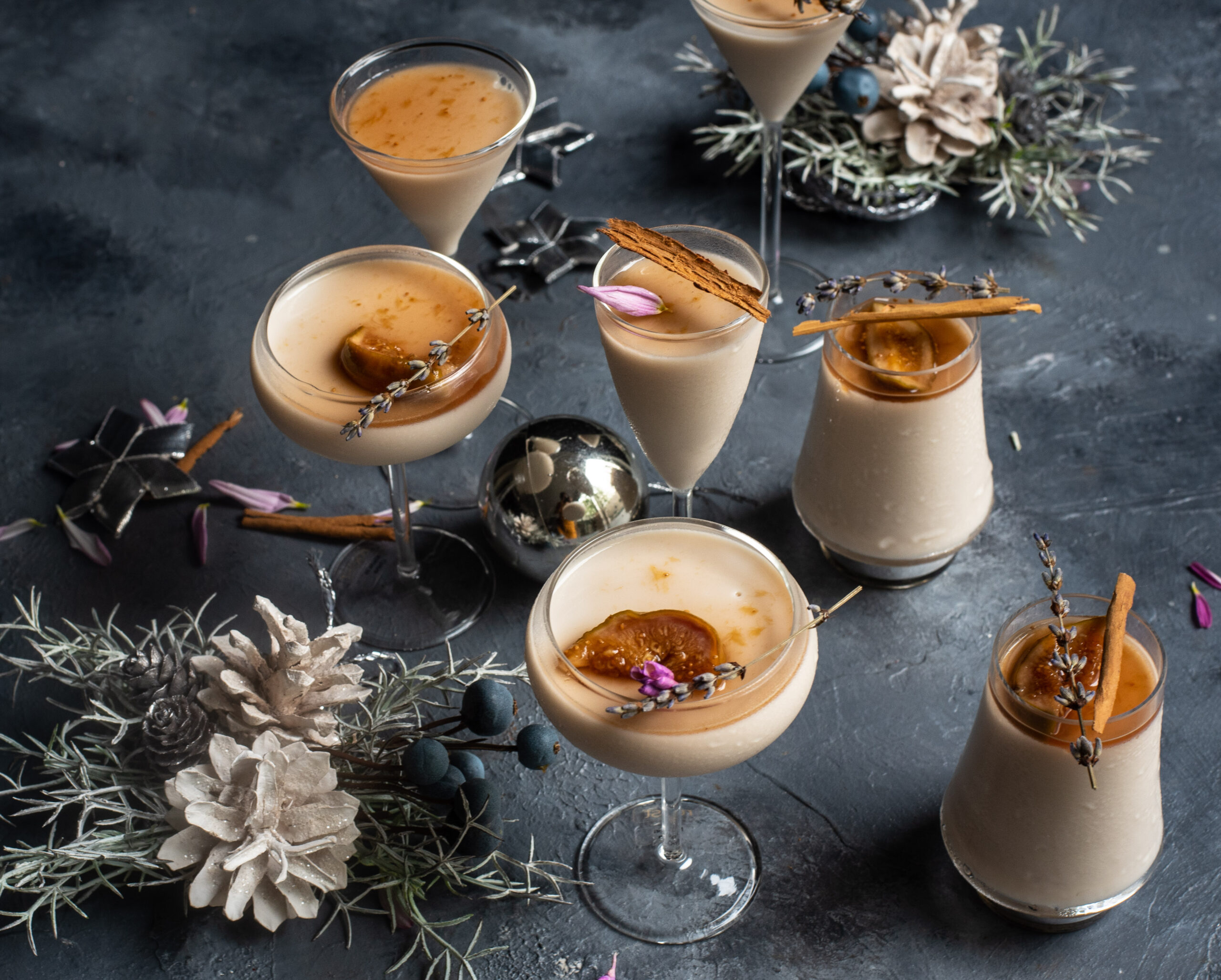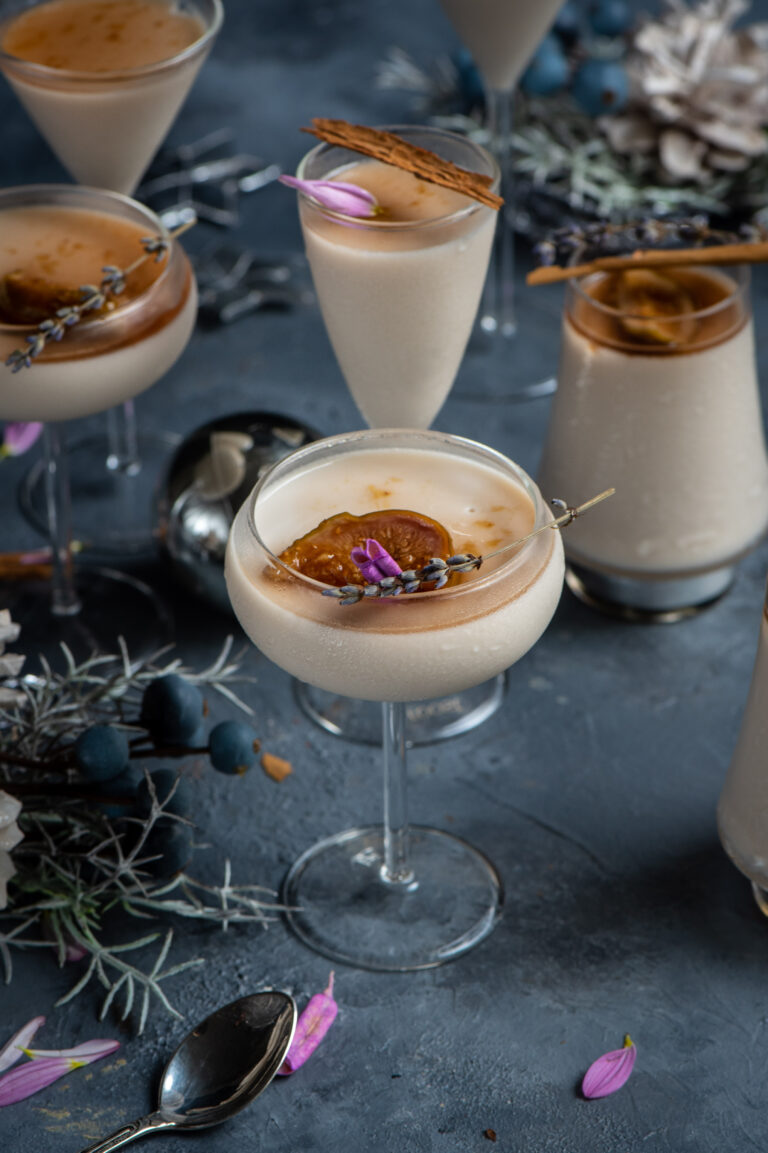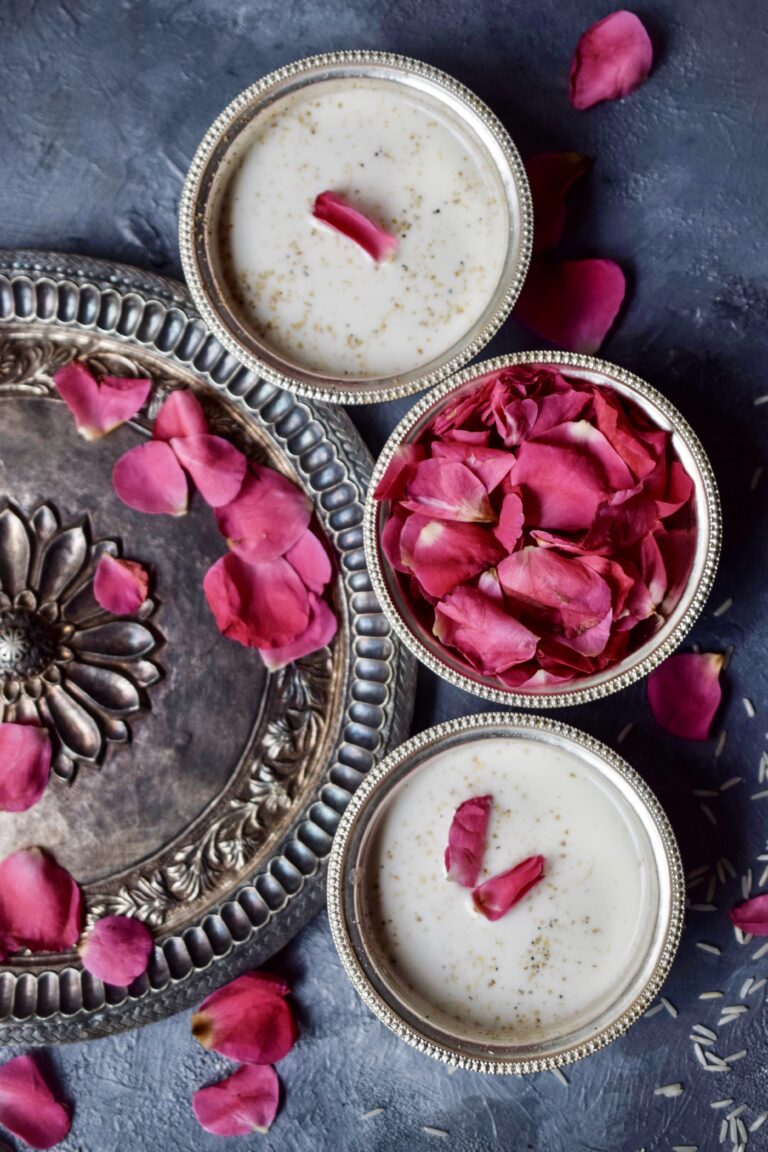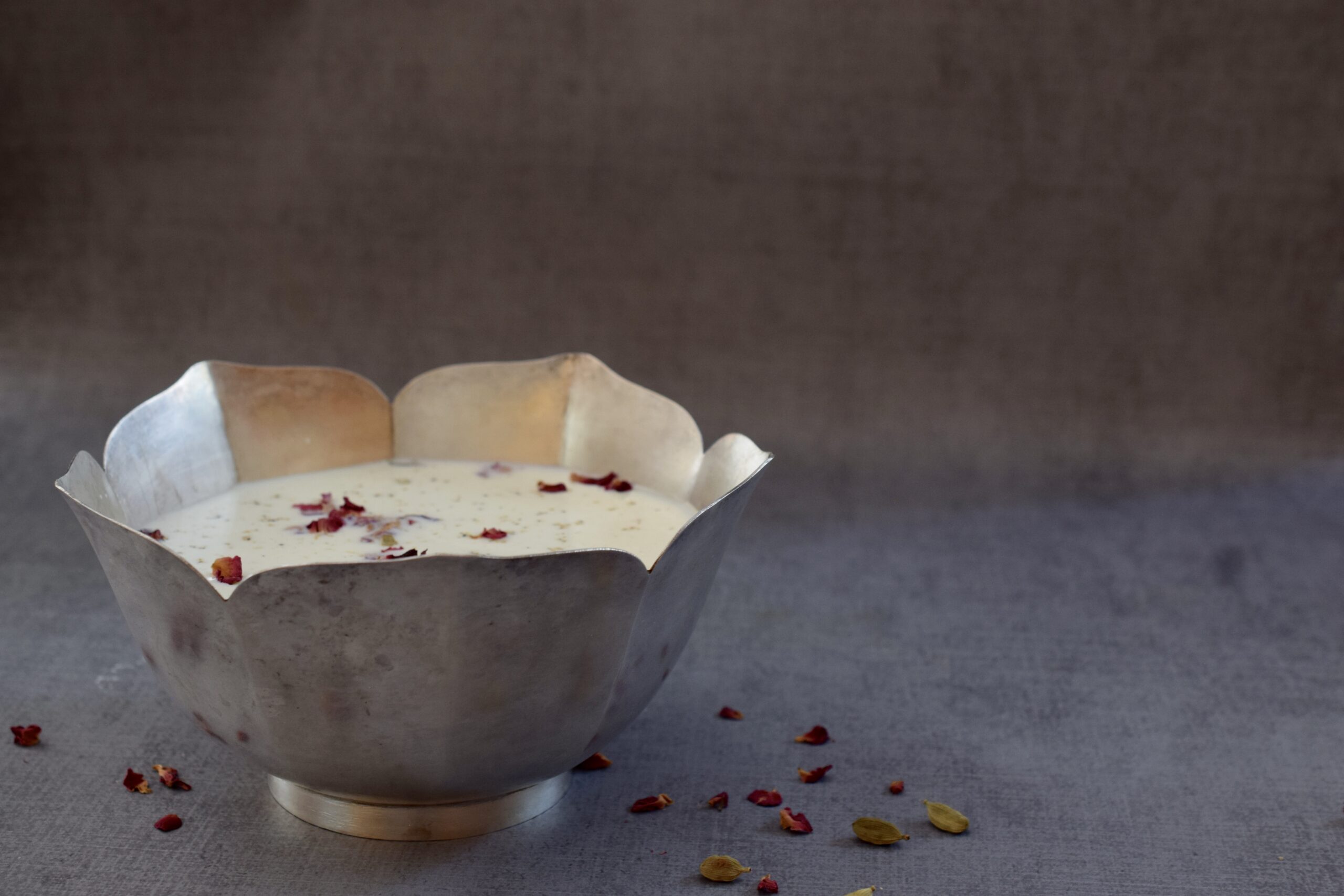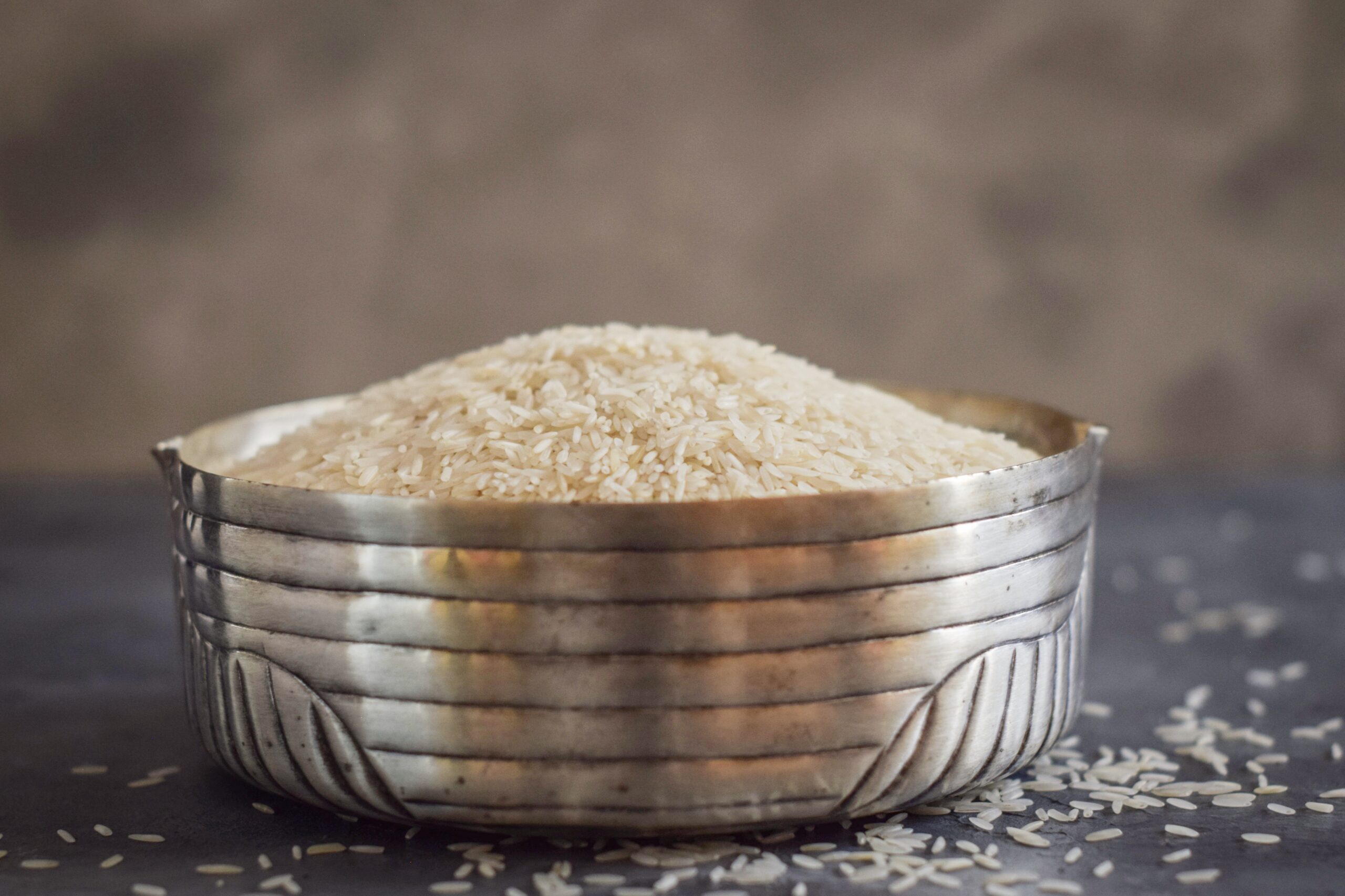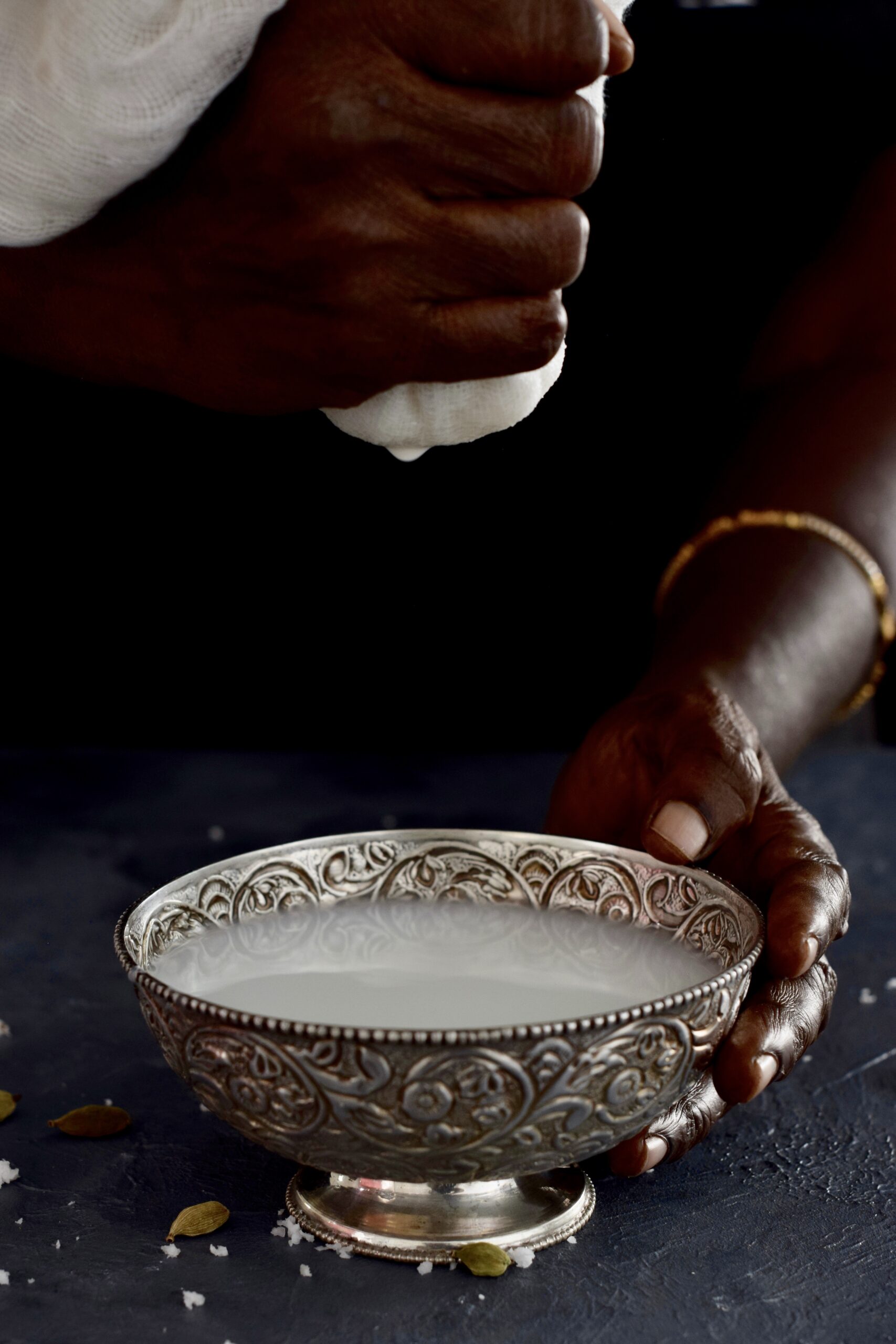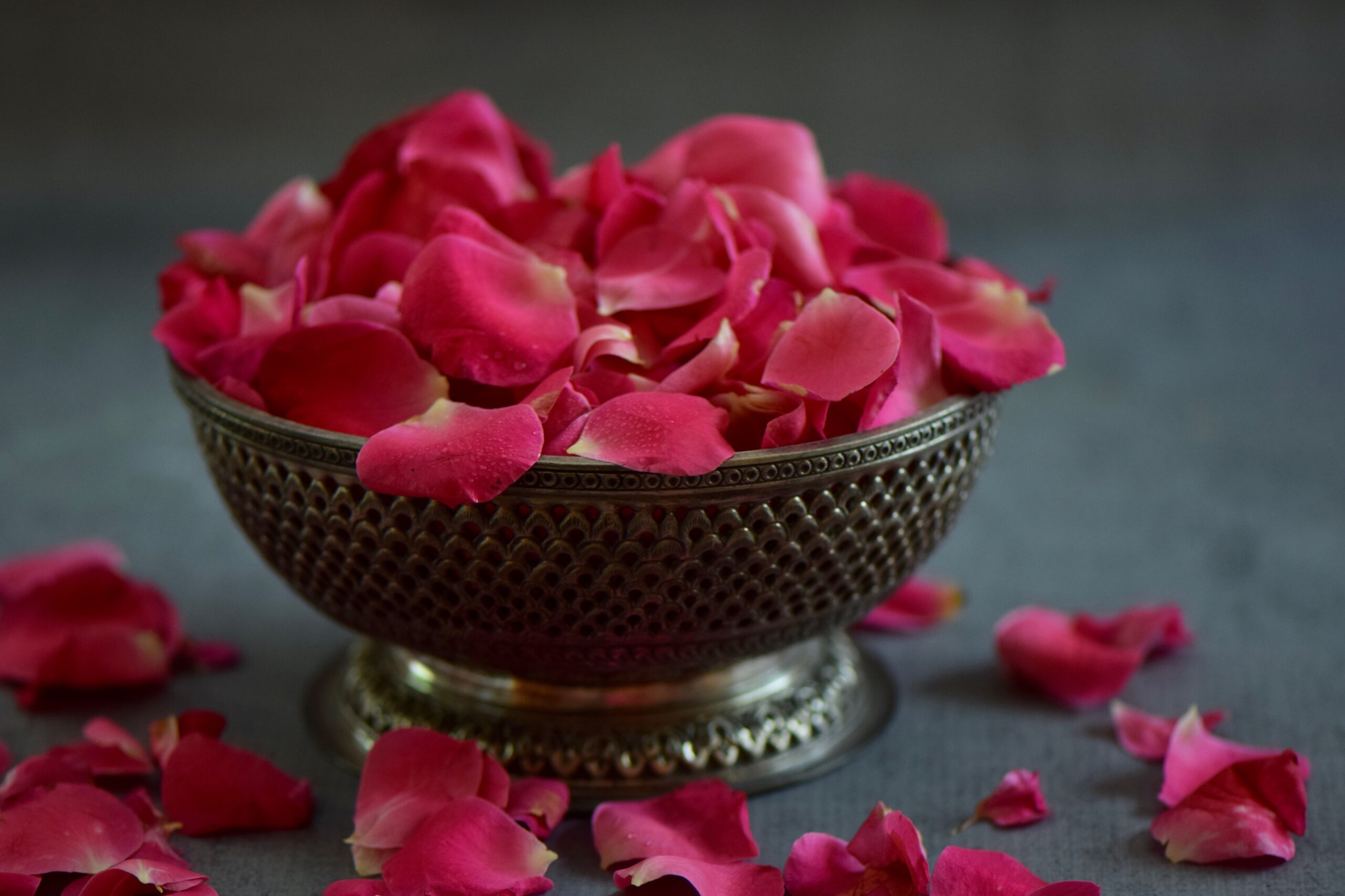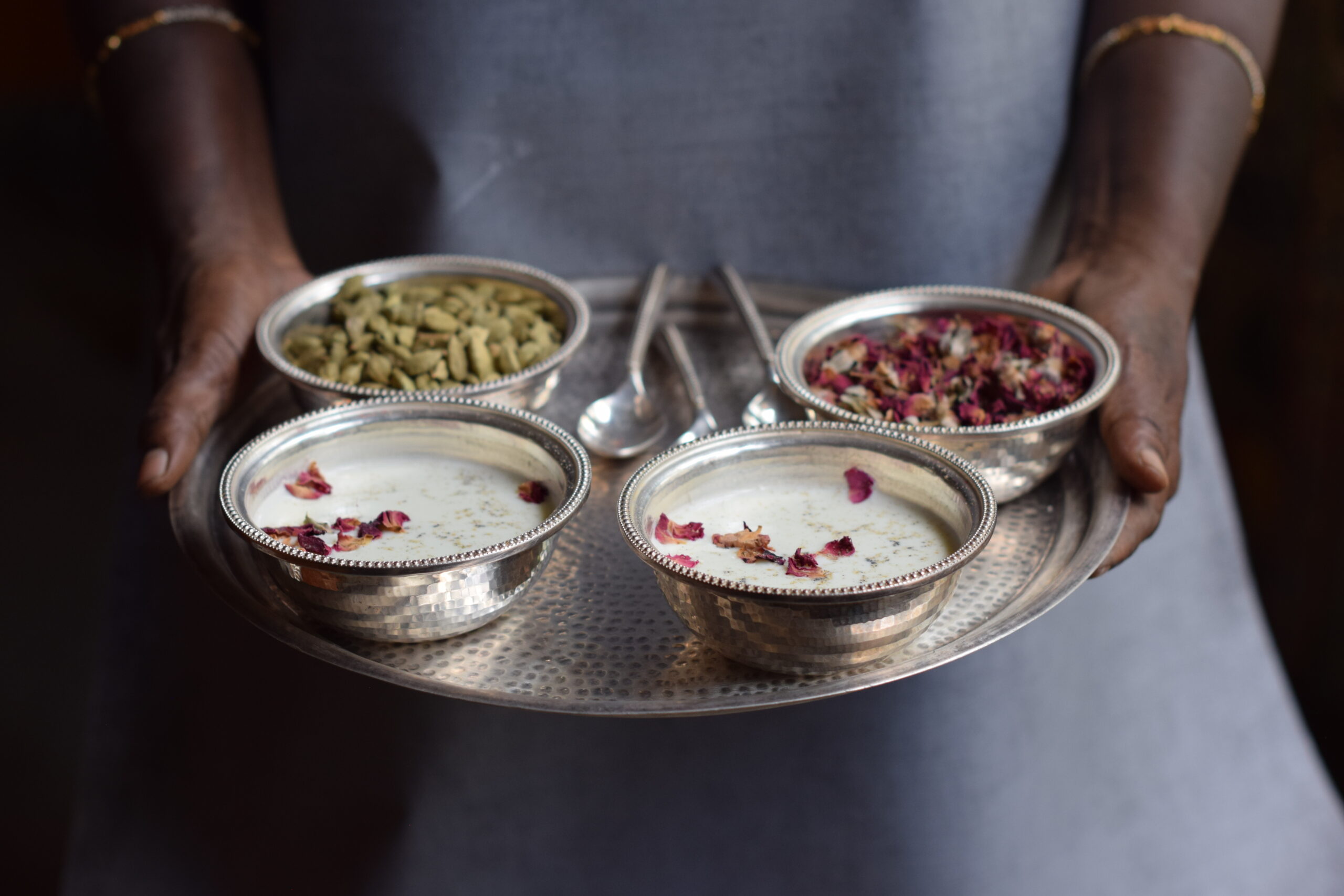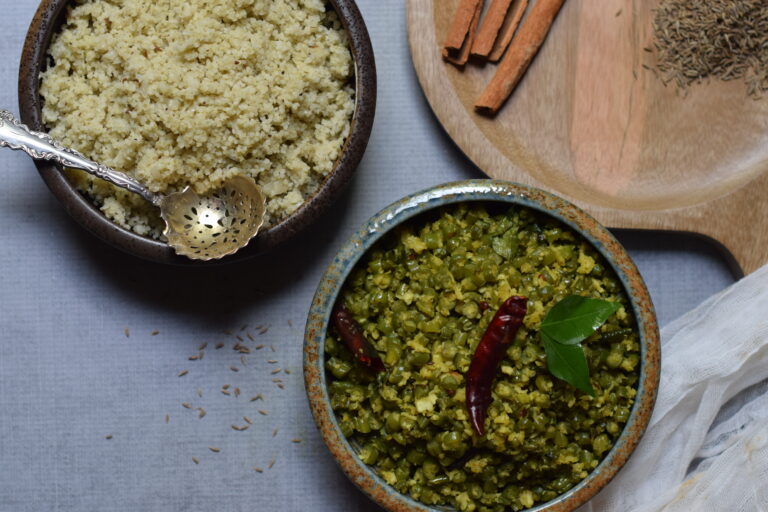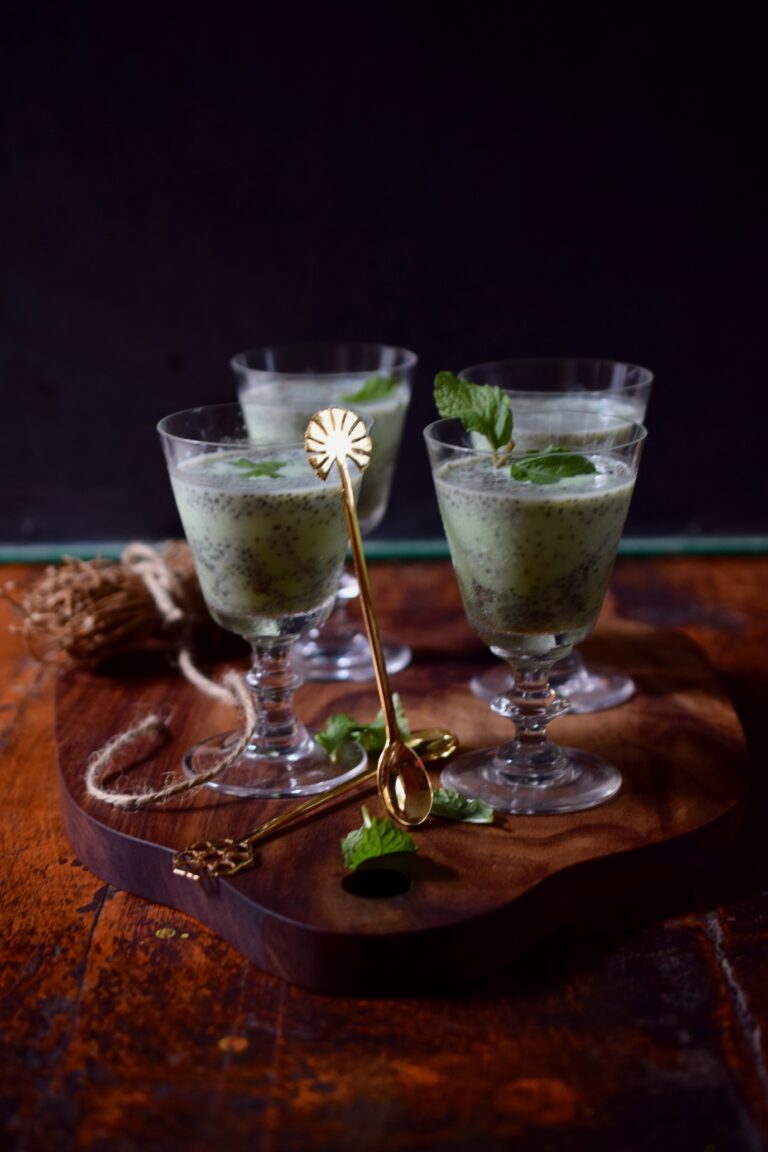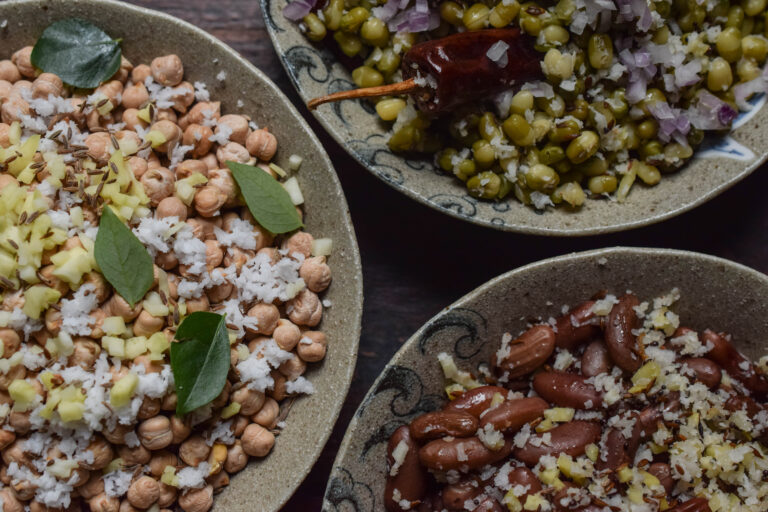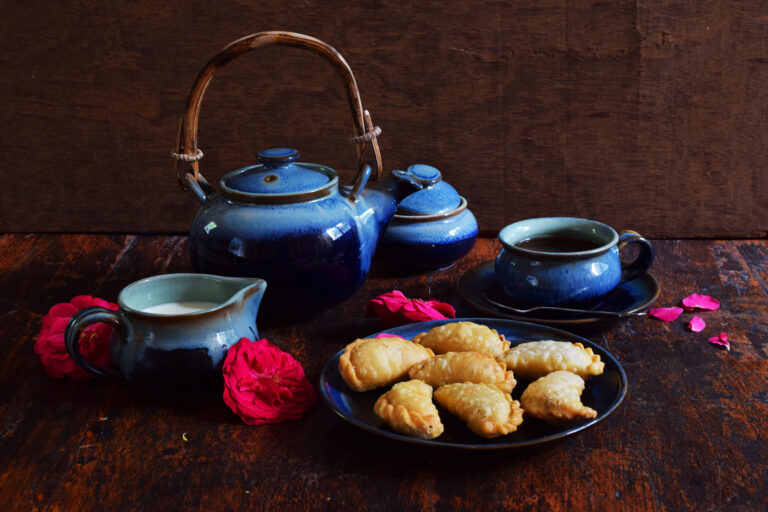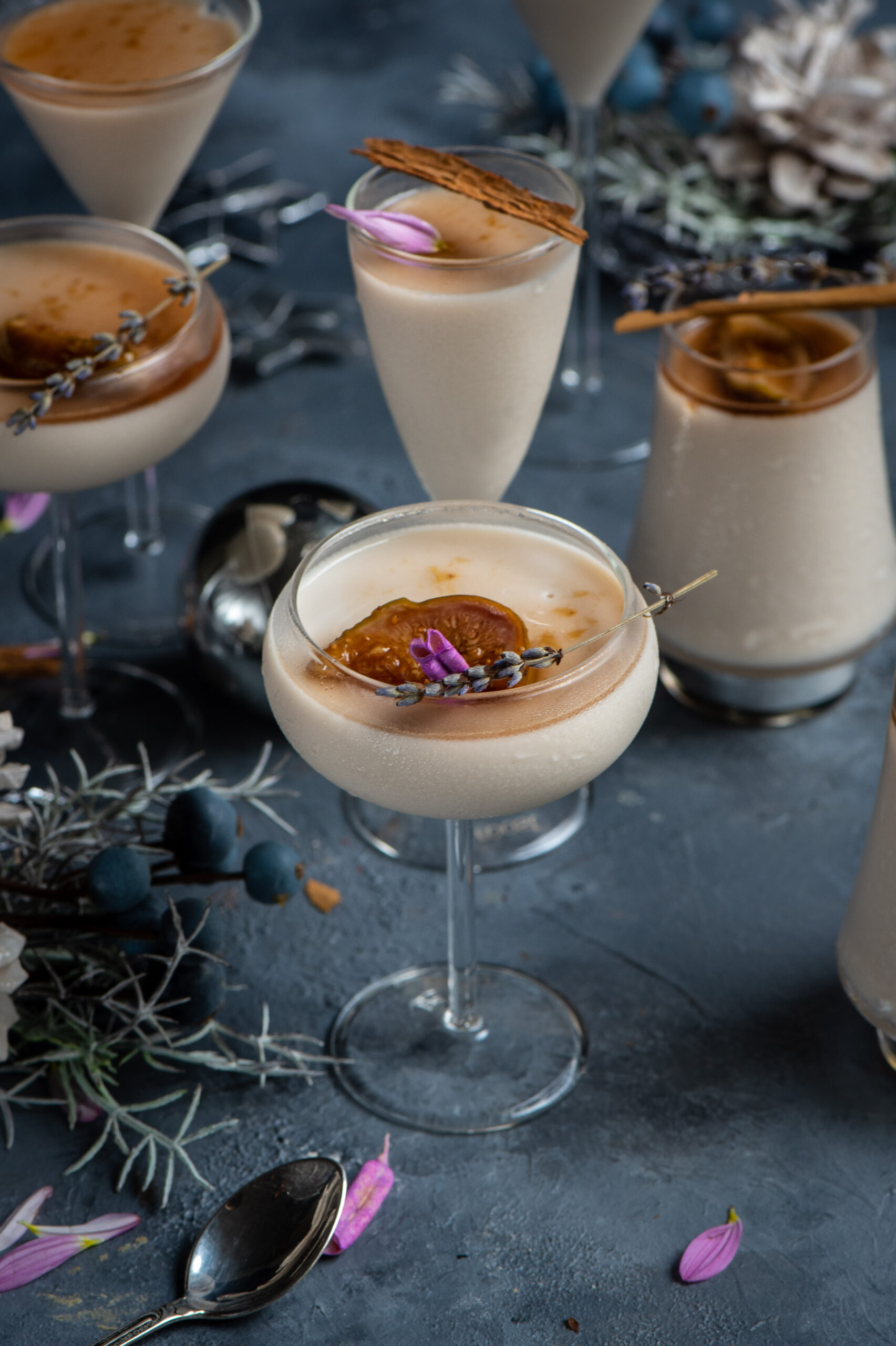
A panna cotta is a classic Italian dessert that is among my favourites – mostly because it is not too sweet. Some say it is quite like baked yoghurt, which I also enjoy. A traditional panna cotta is just dairy, sugar and gelatin, which are then topped with a fruity sauce. But you can also infuse the mixture itself with a flavour of your choice. Perhaps you remember my lavender shrikand from some time ago. That recipe came about thanks to a gift of lavender from my friend Siddharth’s farm in Australia. If you click on the link in the previous line, you’ll find lots of information about the cultivar of culinary lavender known as Miss Donnington. Siddharth sent me a batch from the most recent harvest, and its wonderful scent gives me much calm and joy at the moment. As I held those beautifully dried buds in my hands, I was inspired once more. I was already in the mood for some panna cotta. A lavender infusion would kick it up a notch. And to make it vegan? Perfection.
I’m on a vegan wave at the moment, as you saw from my vegan masala milk post earlier this month. Making a vegan panna cotta is quite simple, just requiring you to replace regular milk with almond or coconut milk. I used coconut cream here for a more luscious texture. If you already have a panna cotta recipe and are trying to wean yourself off dairy, just try it with a milk or cream substitute, using the measurements below. This recipe calls for half the guilt: even thought coconut cream has a high fat content, you can enjoy it without cheating on your dietary preferences. Of course, if you’d rather not try the vegan version, or have milk in your fridge you want to use up, just replace the coconut cream with regular milk or cream.
In my masala milk recipe, I suggested honey as a sweetener, which strict vegans don’t touch. In this one, my preferred sweetener is maple syrup. You can substitute this with another of your choice too. But what I like about maple syrup is that like all the other key flavours here, it is subtle. Coconut, lavender, fig and maple syrup – combined, they are subtly sweet as well. This makes for a perfect dessert after a heavy meal, when anything too rich might be too much.
To top this panna cotta, I used a fig sauce as I found the flavours to be complementary, but you can experiment with everything from blueberries to lilac sauce, depending on your tastes and availability. I’ve refrained from using other additives, keeping the ingredients simple. I want to add here that panna cotta, despite having the ring of a fancy dessert, is actually quite easy to make. It’s perfect for youngsters who are entertaining guests more formally for the first time. And the decorative potential also gives you creative scope.
Plating is essential for a dish like this, otherwise it runs the risk of looking too plain. When it comes to something like panna cotta, you have to find a way to lift the dish so that the person who is going to eat it finds it fascinating even before they place that first spoonful into their mouth. So the visual presentation is crucial. How do you want to impress someone? Do you want to add flower petals, or cut figs and cinnamon sticks, or find another way to bring colour into the display?
Developing my style as a photographer helped me innovate with plating as well. I love setting up my photoshoots, and I feel like I have found a distinct look now – I like dark and moody pictures in 100% natural light, and very little editing. For this shoot, to play up the dish, I decided to bring a bit more brightness in. Yes, brightness – what better quality for a New Year dish (and a New Year wish) to have?
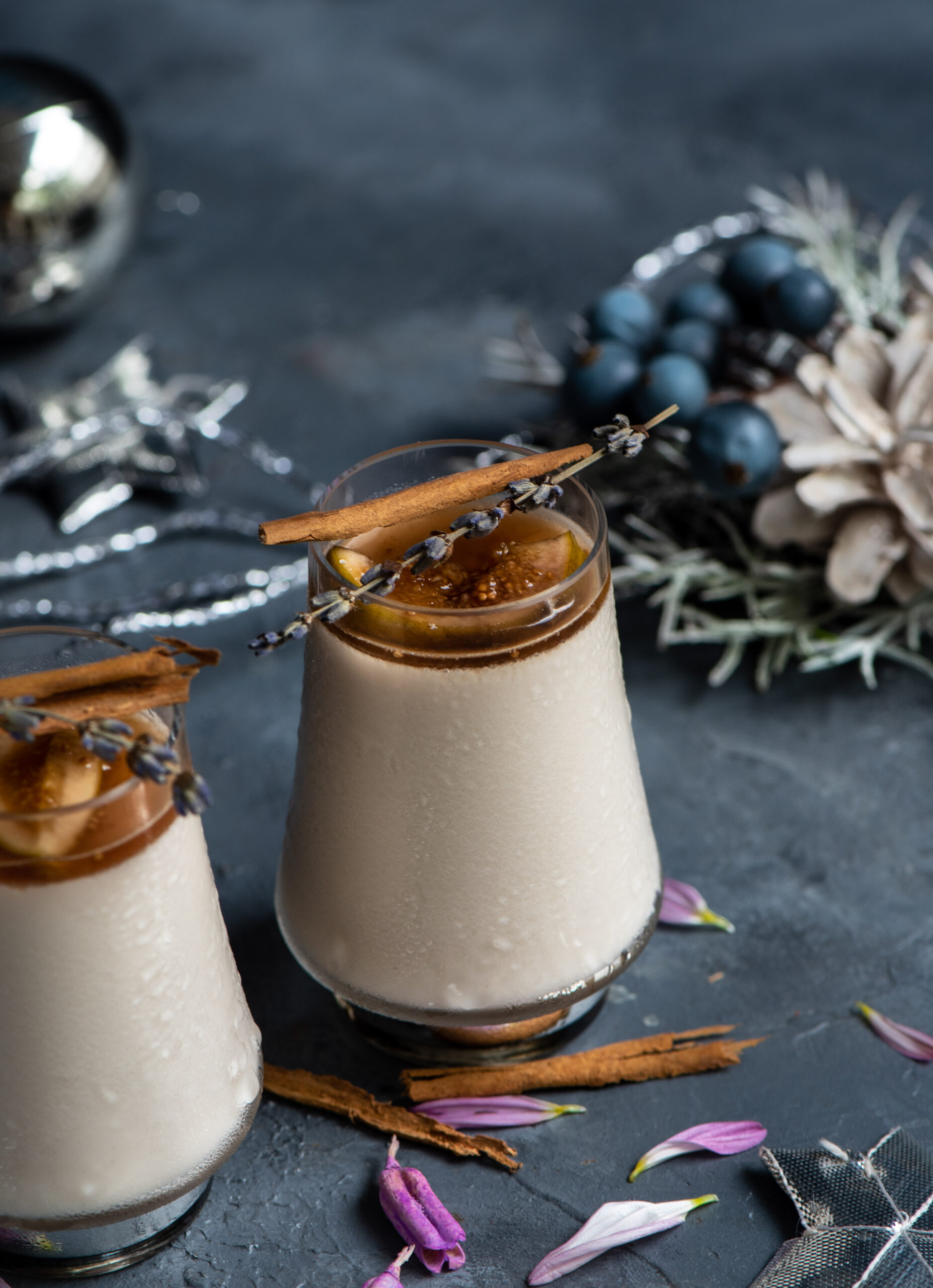
Lavender Panna Cotta
(Yield: 3-4 small cups)
Ingredients
Panna cotta
2 cups coconut cream
¼ cup maple syrup
½ teaspoon lavender buds
1¾ teaspoons kanten (agar agar)
Fig sauce
4 figs (cut to small pieces)
¼ cup maple syrup
1 long cinnamon stick
In a pan, add all the ingredients for the panna cotta. Allow to heat on a medium flame, stirring constantly. Once the mixture begins to boil, you will notice the edges bubbling. Give it a few more minutes (remember to keep stirring), and then turn off the flame. The contents will start to thicken at this point. Close with a lid, allowing the lavender to steep well for about 10-15 minutes. The quality of lavender that my friend sent me was so good, and so fragrant, that I barely had to steep it for the recommended time for the flavours to become well-infused, but this will vary.
Then, strain the liquid into cups of your choice and allow them to set in the refrigerator. Panna cotta is always served chilled.
For the fig sauce, simply add all the ingredients to a pan and allow to boil until the liquid thickens. Keep aside.
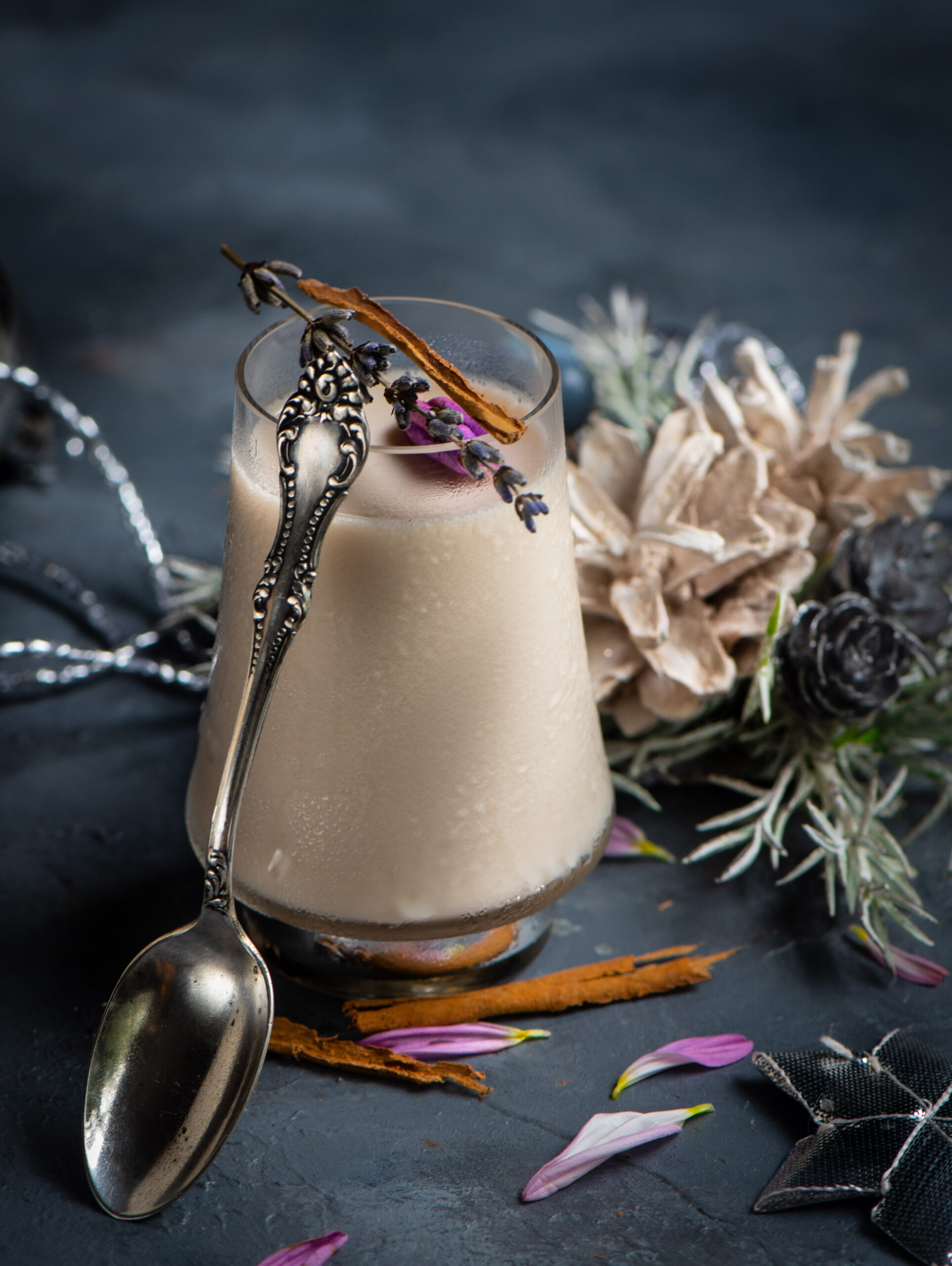
When you are ready to serve this dessert, add a spoonful of the fig sauce onto each cup of panna cotta. Decorate as desired. As I said earlier, plating is quite important for panna cotta of any kind as the dish by itself looks quite bland. You can do this easily, and keep it all edible too, with nuts, fruits and so on.
Lavender is used in alternative healing such as aromatherapy as it is believed to be a calming influence. As I prepared this dessert in my kitchen, inhaling that evocative fragrance, this is what I pondered. I know that the past year has had a lot of volatility for many of us. As we move into this new year, this lavender panna cotta is a heartfelt metaphor for what I hope for us all. Let us wish that 2019 is just as subtle, calming, peaceful – and simply delicious.
